Multiple temporary landmarks are vital to fathom the meanings of Mircea Modreanu’s most recent solo exhibition, “YGGDRASILL”. The roots of this project start in Valea Jiului and are interwoven with memories of rituals and landscapes that marked the artist’s childhood, a native of Petrosani. Without keeping a chronological order, this first period can be associated with the exhibition “Măști de pițărăi” (CREART Gallery, c. Ana Daniela Sultana), where, behind the rigorous documentation, the technique and vibrant colors, one can still observe the innocent fascination of the child who intuitively participates in the preservation of the Ținutul Momârlanilor[i] customs, claimed in their turn from the Dacian rituals. To the personal experiences at the heart of the community of the Ținuturile Momârlănești are organically added a series of broad cultural bridges that cross different historical periods and geographical spaces. From Trajan’s Column to Nordic mythology, diverse references come together in the exhibition “Despre sine, cruci și altele” (MNȚRplusC, c. Călina Coman) and are traversed by the twists and turns of the tree of life, embodied by engraved wooden beams. The work borrows the Nordic name of the allegorical tree, Yggdrasill. Mircea Modreanu’s most recent solo exhibition can thus be seen as a synthesis of a long documentation period, in which the artist becomes the author of a complex meta-history.
Although generally recognized as complementary to scientific research, artistic research is a branch of knowledge that has only recently entered public discourse. The specific methodologies are in a continuous process of refinement, and the results, by the nature of art, are more difficult to evaluate. Initiatives such as Mircea Modreanu’s are, first and foremost, important milestones for progress in this sphere of cultural life. The precision of the artistic process is evident in all three exhibitions mentioned above. The balance between documentation and interpretation shifts the emphasis away from the ethnographic values of the project and confirms the aesthetic worth of the exhibited objects. The agreement between the artistic techniques and the conceptual universe they make visible gives rise to unique artifacts such as the paper rub-ons that form the basis of the exhibition “YGGDRASILL”.
The artist is revisiting the eponymous work that ran right through the exhibition Despre sine, cruci și altele. The engraved wooden beams, then arranged in the form of a meandering path, are in turn subjected to the rubbing technique, generating new objects. The change of register is easily noticeable – while “Despre sine, cruci și altele” and “Măști de pițărăi” appeal to real objects, traditions and experiences, “YGGDRASILL” marks the shift to another realm, transnational, transhistorical and deeply personal. Each beam bears the mark of a contemporary rune, an original alphabet created by the artist “in collaboration” with the wood fiber. The beams are rubbed on tall strips of paper, arranged vertically in the exhibition, preserving the character of monuments documented in earlier stages – trophies, milestones, crosses. Together, the works form a pyramid, a family tree of wood spirits, each with its name revealed by the artist. All these details implicitly suggest the ritualistic terrain of the cemetery and also reassert the extensive documentation of rites of passage undertaken by the artist beforehand. Mircea Modreanu expands previously observed cultural bridges and appropriates them, generating an uncanny, deeply familiar yet wholly original universe.
The roots of the works are casts of the artist’s hands – fingers, joined in what could be a sign of the cross, each holding a subtle hook. The difference in height between the casts not only energizes the entire exhibition, but also successfully establishes the convention of axis mundi, making partially visible a realm strongly connected to the present plane. The apex of the pyramid traced by the works is doubled by a heap of similar casts. “YGGDRASILL” thus confronts the viewer with a complex semiotic landscape that can be interpreted in various more or less optimistic keys. The artistic research undertaken by Mircea Modreanu offers points of reference for decoding without being reduced to an ethnographic study. Called by curator Călina Coman, in the context of the exhibition “Despre sine, cruci și altele”, Modreanu puts on this garb once again, decomposes and recomposes in front of the audience precisely the idea of identity. The creator is simultaneously present and absent – the artist’s hands orchestrate the entire ensemble of works, partly assuming the function of the tree of life. The heap of hands evokes both the creative gestures and the collective efforts that build the history of a community. The boundaries of history and identity are questioned and neutralized, becoming fluid. The trans-geographical space mapped out by Modreanu becomes a terrain for re-evaluating personal identity, contemplating origins and rewriting identity myths. The choice to use precisely one of the casts for the exhibition poster is therefore no coincidence, emphasizing rather the narratives behind the vestiges, the actual lives of the members of a community and the invisible forces that unite them.
From the horizon of ontological themes that the artist’s approach opens up, it should not be missed how the exhibition also relates to the present. Without being an intention expressed by the artist, the existence of this project in a period marked by increasingly acute global political tensions can generate positive dialogues about a pan-European identity, about history and its interpretations, about how understanding and preserving the past inevitably influences the present. Cornerstones have been laid with “Despre sine, cruci și altele”, where the links between Nordic and Jiu-specific or Dacian rituals become apparent. What “YGGDRASILL” brings is the generation of a utopian place, where differences are blurred to accommodate a collective memory. In a pessimistic key, the engraved wooden beams can be associated with a series of simplified, hastily raised crosses – a ritual of compromise for those caught in the middle of conflict. The monumental aspect of the works and the exhibition as a whole, the personal runic alphabet, the htonian symbolism, obviously allude to a possible distant civilization, but they can also be related to the memory of those who belong to no one and yet to whom we are all linked.
[i] Ținutul mormârlanilor represents the settlements of the sheep herders of Valea Jiului, namely in the East and West. The settlements in Valea Jiului have preserved ancient customs, such as the cross wakes, which are still present today, the measuring of sheep, burial in the house’s garden and not in the cemetery, etc.
Translated by Liliana Popescu
POSTED BY
Karina Ganea
Karina Ganea (b.1999) is an emerging curator and researcher living and working in Cluj-Napoca. She initially studied at the National University of Theatrical and Cinematographic Art "I.L. Caragiale" i...
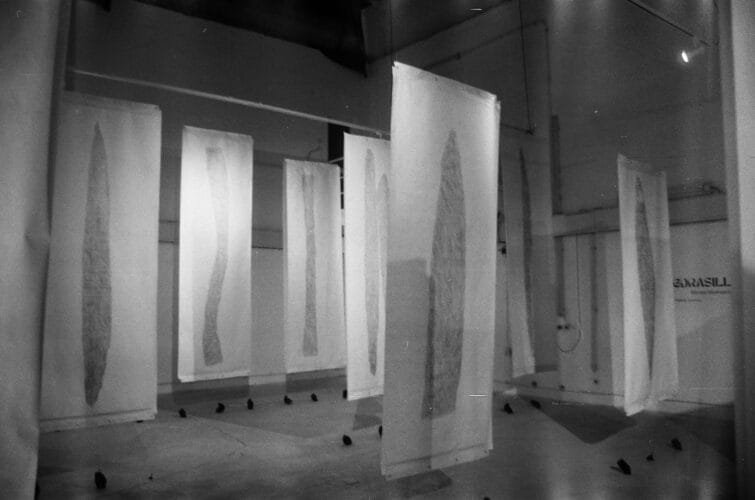
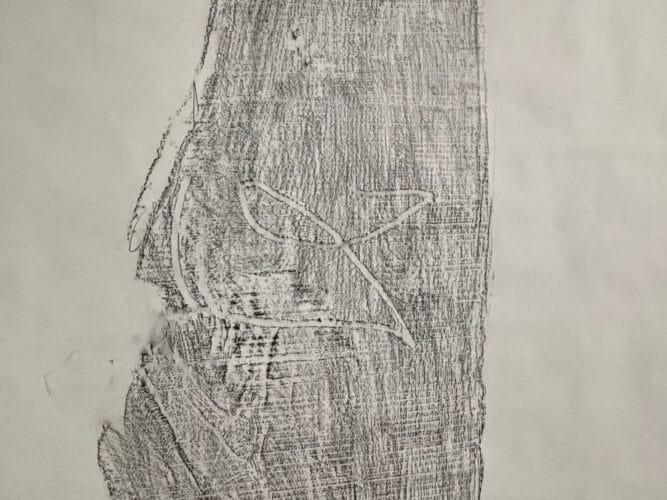
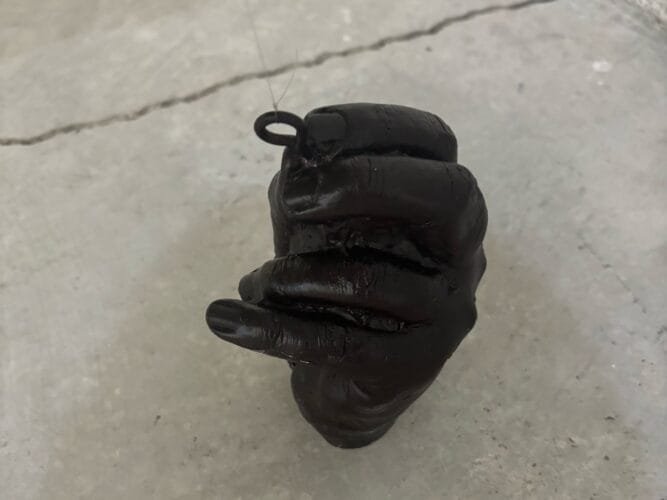
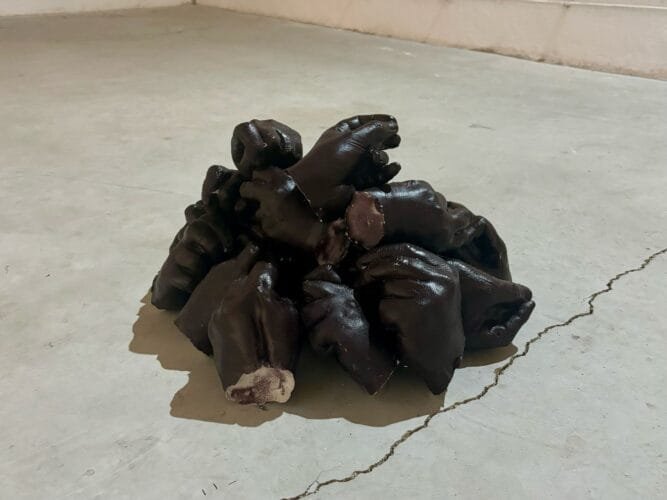
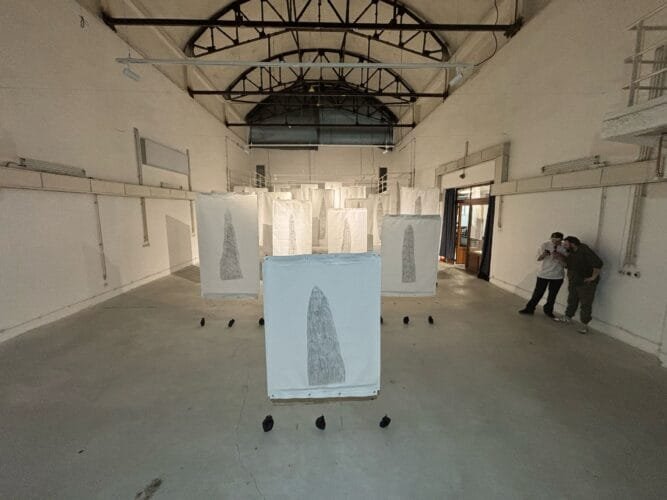
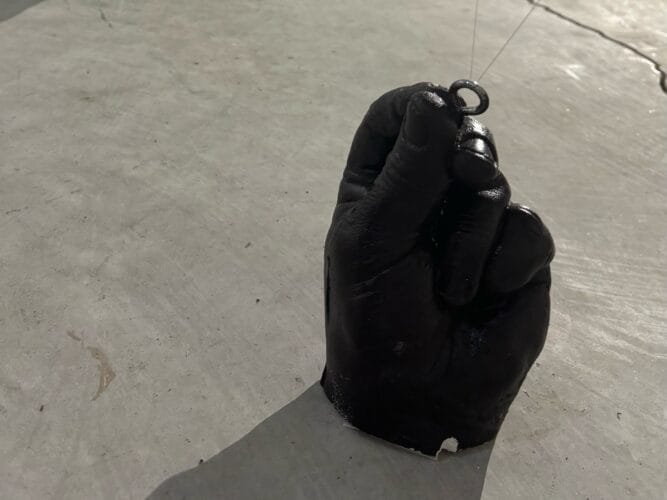
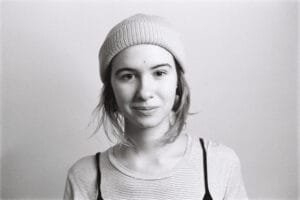
Comments are closed here.